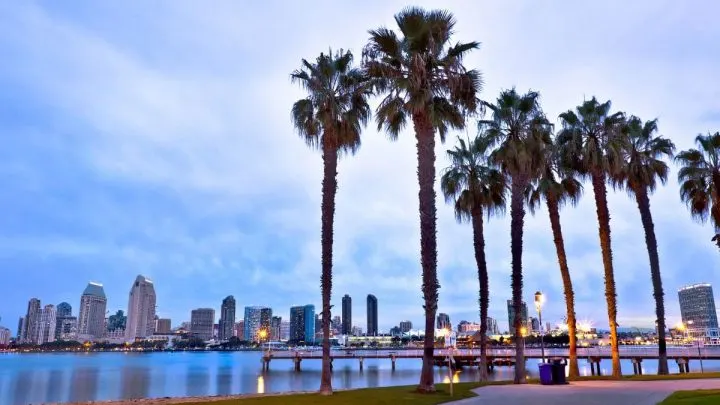In today’s article, we will talk about the types of palm trees in California. Today we have prepared for you as many as 9 types of palm trees that will beautify your garden, driveway, or wherever you are thinking of planting it.
The palm tree dates back to around 80 million years ago. Fossils have been found that are as old as 80 million years. Imagine having a part of such an old history of flora in your front yard.
Today there are as many as 2,800 types of palm trees, characteristic of various growing regions, and today we will talk about 9 types of palm trees that are characteristic of California and the Californian growing conditions.
If you’re ready to learn all about them, let’s get started.
California Type Of Palm
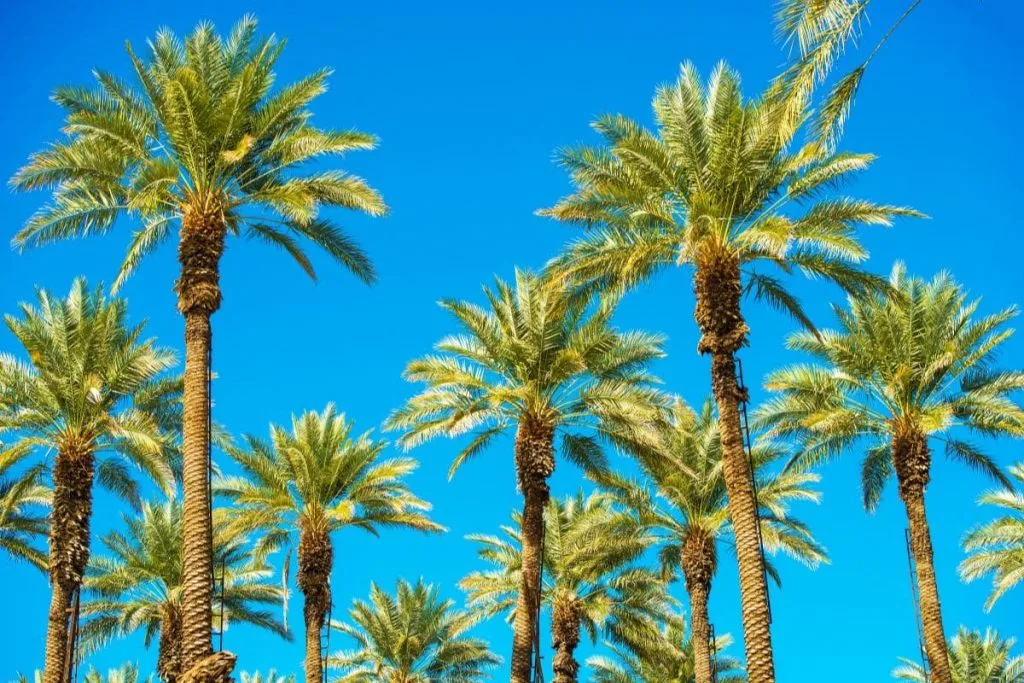
California palm trees are much larger than those you will see in other warm growing zones. For example, the types of palm trees in Florida are much lower than those that grow in California.
Palm trees in California are tall, and proportionally speaking, the small “bushes” of leaves at the top do not look proportional to their long stems.
The stems are usually yellow-brown in color and the leaves are much lighter, whiter, and silvery than the other palms you are used to. But will it beautify your garden like everything else? Palm-olutely!
Care Guide For 9 California Palm Trees

If you want to provide your yard palm trees with the best possible care, make sure you learn in detail what light they need, what soil type, what kind of fertilizers, and so on.
To make sure you know all of that, we bring you the ultimate care guides below for all 9 types of palm trees in California. Let’s begin then.
1. Mexican Fan Palm – Elegant Palm In Front Of Your Home
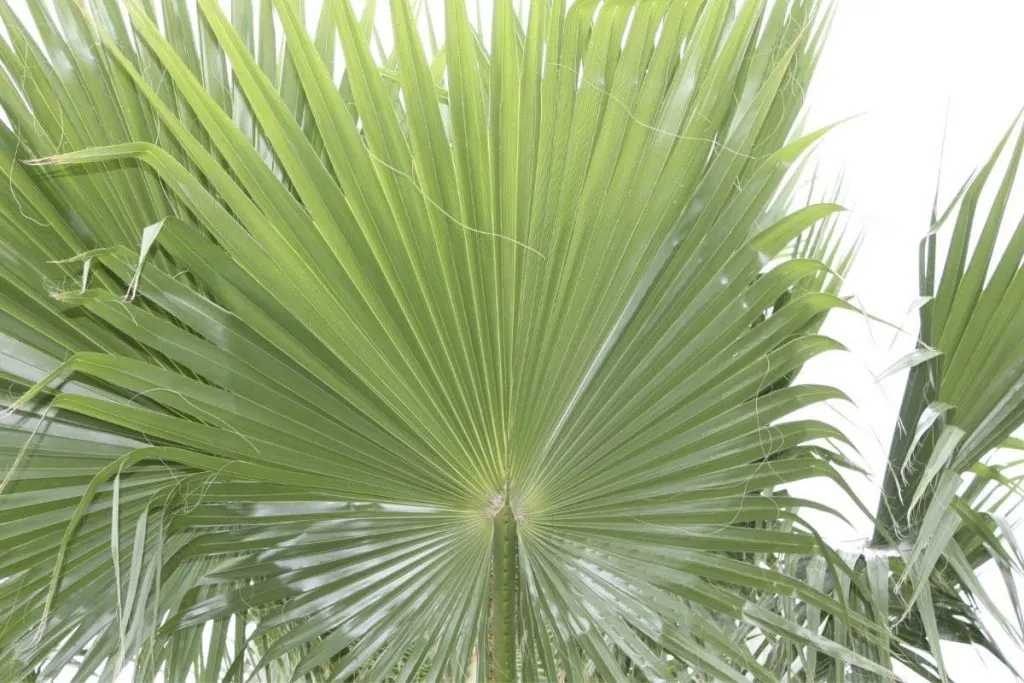
Mexican fan palms are often called heavenly brush because of their height. It can grow between 70 to 100 feet. Just imagine that magnificent display in your backyard. It is characterized by bright green thin oblong leaves that grow in the shape of a fan, just as its name suggests.
Light conditions
This type of palm tree likes bright indirect light, but can also tolerate shade. Too much shade is of course not good for any palm tree, but a lot of direct sun quickly dries out its leaves and it no longer has its green palm-like glow on its leaves. Be careful with the planting location.
Water needs
When it comes to water needs, you will often see that these palms are planted on beaches, promenades, streets, etc. Palm trees still need water here and there. Keep it damp for 3 first months, and then after that period only during the big drought and dry periods.
Soil type
When it comes to soil, it is not too difficult to conclude that almost all types of palm trees like sandy soil. Sand to loamy soils is the best types for these trees. Slightly acidic or alkaline soils are not bad either, but the first two are better choices.
Fertilizer
Fertilizer is not what you have to give your palm to make it grow, soil and sun are more important factors, but if you want to improve its growth, fertilize it with 8-1-10-4 fertilizer that is specially made for palm trees.
Propagation
Palm trees are propagated from seedlings. Prepare fresh soil that is previously well drained and fertilized with a type of fertilizer that suits your specific plant the most. Place them in a place where there is bright light.
2. California Fan Palm – Native Palm Trees Of California In Your Parterre
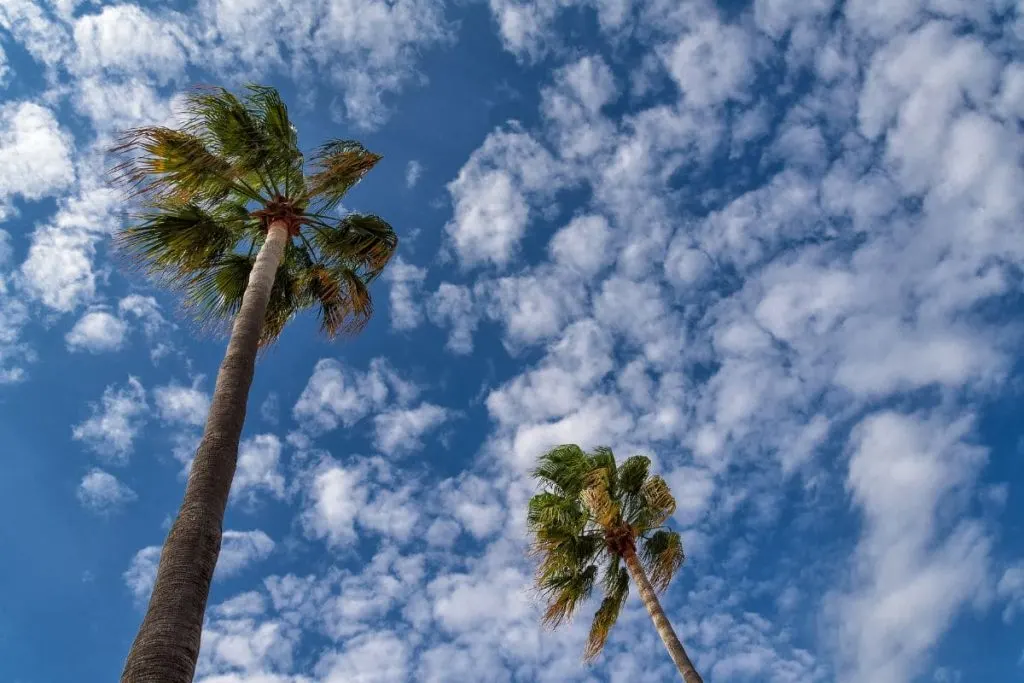
California fan palms are native Californian palms. They are usually found in southern California.
They are recognizable why their super height and unusual leaves below that grow under the leaves at the top. It looks like there is a little bush underneath its top leaves.
The leaves are divided into two levels, or at least it seems like it. They are similar to canary island date palm with its growing conditions and color of the leaves.
Light conditions
One of the native palm trees likes bright indirect light in the morning to partial shade in the afternoon hours. When planting, make sure you follow these instructions. Direct sunlight easily burns their leaves.
Water needs
This lovely beach palm has to be watered every 2 months approximately when there is too much sun, when temperatures are very high, and when you notice that it looks droopy. Of course, palms look droopy most of the time, but pay attention, there are small differences.
Soil type
These palm tree species prefer sandy soils that are slightly acidic. Unlike the Mexican fan palm, we talked about above, they don’t like alkaline soils.
Fertilizer
Use the same fertilizer you used for the Mexican fan palm. You need to apply a fertilizer couple of feet from the trunk, never directly around the trunk.
Propagation
Palm trees are propagated from seedlings. Prepare fresh soil that is previously well drained and fertilized with a type of fertilizer that suits your specific plant the most. Place them in a place where there is bright light.
3. King Palm And Say No More
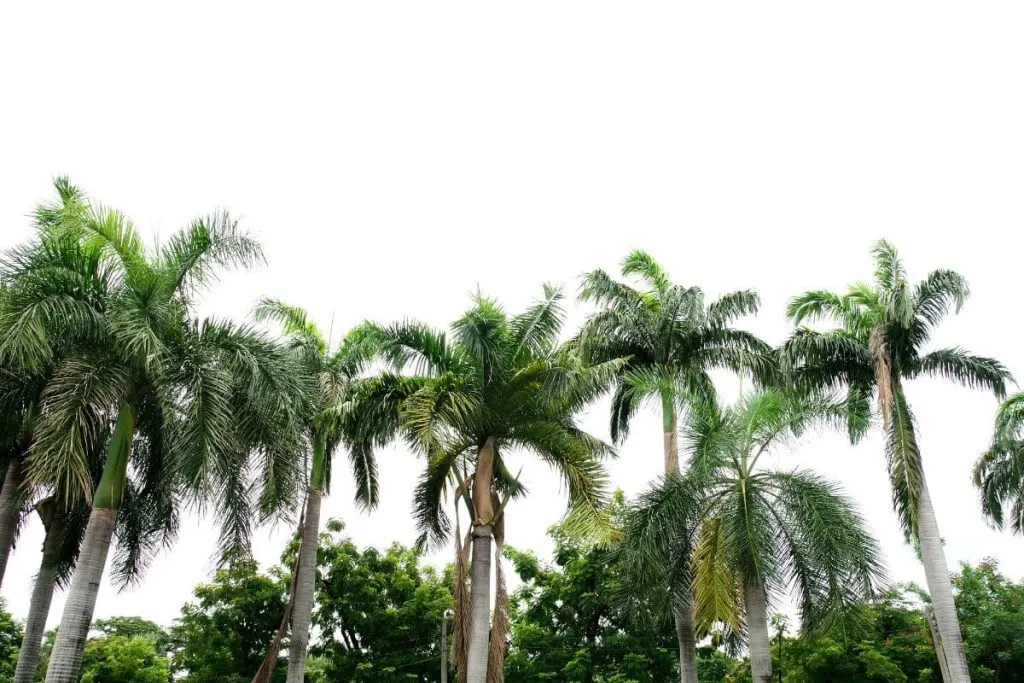
Although it has the name king palm and you would probably expect it to live up to its height, this palm tree can grow between 40 and 60 feet.
However, it is not as big as the Mexican fan palm or the California fan palm, but her beautiful appearance will make up for the lack of height.
Light conditions
Unlike the species we mentioned above, which does not really like direct sunlight, this species needs at least 8 hours of direct sunlight in order to grow healthy and fast. When it is not exposed to direct sunlight, it needs mild light, no shade!
Water needs
The watering process is the same as for the Mexican palm tree. Water it more aggressively for the first 3 months, then slow down and water only as needed during dry periods.
Soil type
Sandy soil and loamy soil, which can be slightly acidic, respond best to them. Apart from these types, do not experiment with other types of soil.
Fertilizer
It is enough to fertilize your king palm twice a year with fertilizers 15-5-15 or 12-4-2. Do not deviate from these two types!
Propagation
Palm trees are propagated from seedlings. Prepare fresh soil that is previously well drained and fertilized with a type of fertilizer that suits your specific plant the most. Place them in a place where there is bright light.
4. Pygmy Date Palm And Its Amazing Features
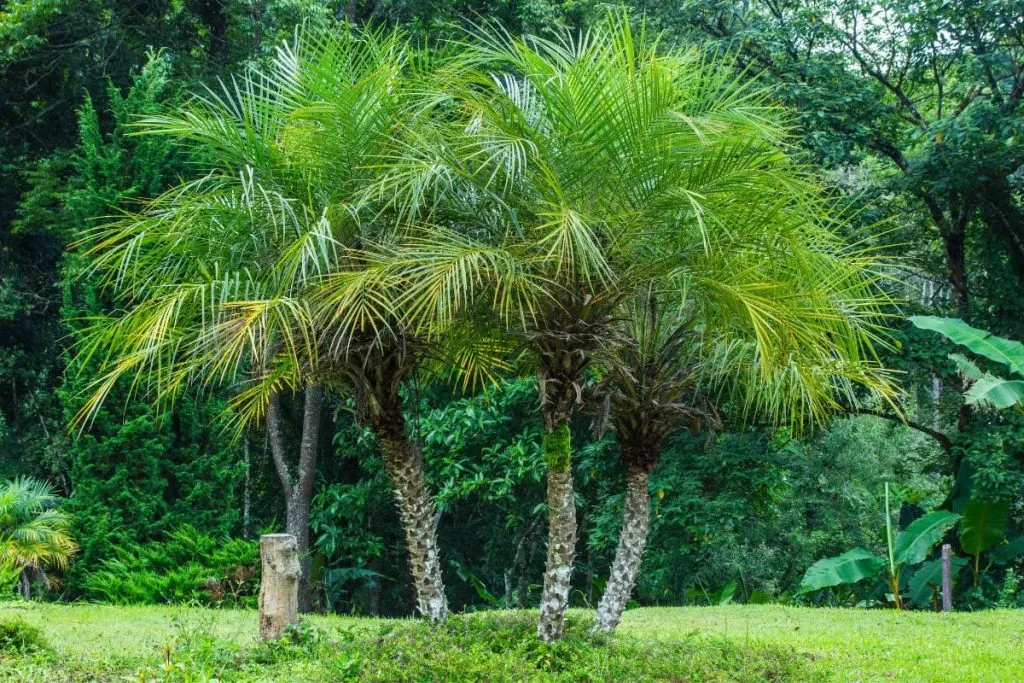
I’m sure you won’t see this coming! This isn’t one of the high palm trees you’re used to. They grow up to 6.5 feet high and 5 feet high.
It’s a perfect yard palm. If you have to choose between 100 feet palm and 6.5 feet palm, which one do you rather choose? It is also suitable for colder climates.
Light conditions
It prefers full sun conditions, approximately 5-6 hours of direct sun. It tolerates partial shade for the rest of the day, but only if you give it the necessary hours of sun.
Water needs
Surprise again. If you are used to the relaxed watering conditions of other palms, this palm will sometimes need water every 2 or 3 days! Yes, you read that right. You can also spray its leaves with water to refresh them.
Soil type
Although the types of palms above are quite strict with the choice of soil, this palm can adapt to various types of soil and will not complain if you do not follow its care guide 100%. They grow well in cold hardy regions too.
Fertilizer
The best choice for king palms is an 8-2-12 fertilizer that will provide your palm tree with the potassium it needs to grow.
Propagation
Palm trees are propagated from seedlings. Prepare fresh soil that is previously well drained and fertilized with a type of fertilizer that suits your specific plant the most. Place them in a place where there is bright light.
5. Nothing Can Beat A Queen Palm

This is another of the taller types of palm trees that you will often see on the streets of California.
It grows up to 50 feet in height and has the characteristic appearance of a palm tree. It is very similar to the Mediterranean fan palm species by its size and colors, but this isn’t a fan-shaped leaf type.
Light conditions
Too much direct sun can easily and very fast scorch its leaves. The best light conditions are bright indirect light with partial shade in the afternoon hours.
Water needs
During summertime, it’s best to water your palm tree every 7 to 10 days. As you’re getting closer to the winter months, you can reduce watering to every 3 or 4 weeks.
Soil type
Again, like the first 3 types, this type of palm tree also like sandy soil only. Palm fronds just won’t get so green if you use other soil types. Tall palm trees such as date palms and beach palm trees just love sandy soils more.
Fertilizer
The best fertilizer for queen palms is granular fertilizer. It’s best not to experiment on your own with its fertilizer, use only this one.
Propagation
Palm trees are propagated from seedlings. Prepare fresh soil that is previously well drained and fertilized with a type of fertilizer that suits your specific plant the most. Place them in a place where there is bright light.
6. Dwarf Sugar Palm – Ringed Trunks And Dark Green Leaves For Corner Of Your Terrace

Another smaller type of palm, perfect for your yard. They grow up to 8 feet tall, and are super easy to maintain and very very beautiful.
Palms of this sort have big leaves on a small trunk and leaves color is usually much darker than the regular palm trees we discussed above. These palms are also slow-growers.
Light conditions
They require full sun conditions to partial shade. They don’t like much partial shade. It’s best to combine it: 7 hours of full sun and the rest can be partial shade.
Water needs
Water every 10 days. Their palms are not very drought tolerant so make sure you’re following their regular watering schedule.
Soil type
They prefer the richest soil. Soil for this type of palm has to be rich in nutrients and organic matter. Soggy, loamy soils aren’t recommendable.
Fertilizer
You can fertilize them 3 or 4 times per year with fertilizers specially made for palm trees.
Propagation
Palm trees are propagated from seedlings. Prepare fresh soil that is previously well drained and fertilized with a type of fertilizer that suits your specific plant the most. Place them in a place where there is bright light.
7. Washington Fan Palm – Tall Beauty For Your Driveway
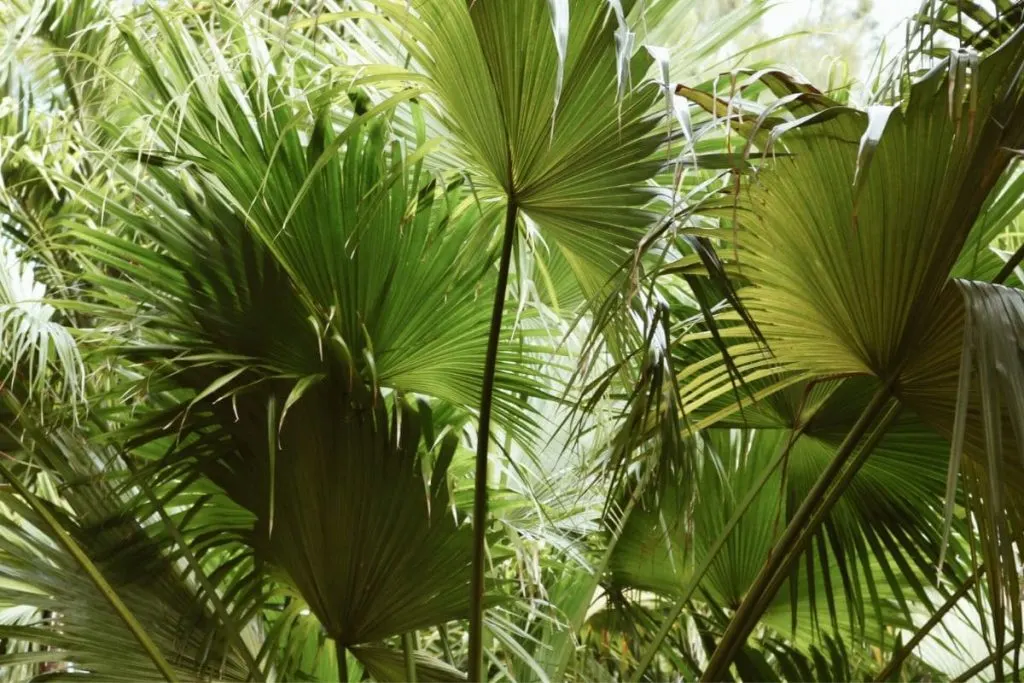
Washington fan palm just like the Mexican fan palm can reach up to 100 feet tall. They have amazing leaves crown shape that is usually 2-5 feet long. These palms are not slow or fast growers. They grow 3 feet per year. It’s native to Colorado Desserts.
Light conditions
They prefer bright indirect sunlight the most. Partial shade and full sun aren’t much recommendable. However, they tolerate a bit of partial shade than the full sun.
Water needs
One inch of water per week is more than enough to keep this plant growing. If you skip watering, do not overwater it. It hates standing water!
Soil type
Neutral soils, well-drained soil, and rich organic matter are the best soil types for this lovely plant. Slightly acidic soils can be okay too.
Fertilizer
Fertilize them with 8-1-10-4 fertilizer for 100 sq feet of area, and this one only!
Propagation
Palm trees are propagated from seedlings. Prepare fresh soil that is previously well drained and fertilized with a type of fertilizer that suits your specific plant the most. Place them in a place where there is bright light.
8. Choose A Mediterranean Fan Palms For Your Garden
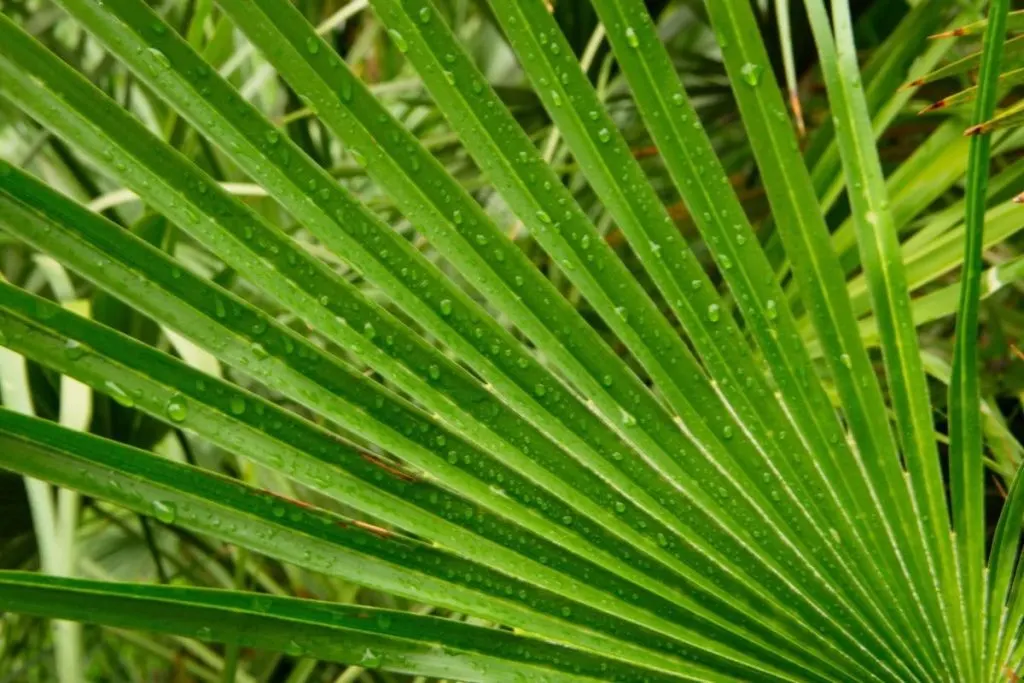
This is another example of dwarf types of palm trees in California. These lovely palm trees grow up to 3 feet tall, and that is it.
No matter how perfect your care guide is, that’s its maximum height. They are perfect yard palms. When you prune them carefully, they grow in a perfect shrub form, very typical of Mediterranean regions.
Light conditions
They prefer at least 7-8 hours of direct sunlight per day. They can also thrive in bright indirect light, but partial shade and shade locations just don’t suit them at all! Avoid such positions when planting.
Water needs
When you notice sudden temperature changes, especially higher, water it on weekly basis once, when the temperature is optimal and tolerable, once every 2 weeks. Any type of water works for the palm trees.
Soil type
Clay, sand soils, loamy soils, and acidic soils work well for Mediterranean fan palms. Highly acidic soils aren’t recommendable.
Fertilizer
Use slow-release palm fertilizer for this type of palm tree. Do not experiment with fertilizers. This is the only one that has all the needed nutrients it needs.
Propagation
Palm trees are propagated from seedlings. Prepare fresh soil that is previously well drained and fertilized with a type of fertilizer that suits your specific plant the most. Place them in a place where there is bright light.
9. Florida Royal Palm/ Cuban Royal Palm For Your Yard Decor

These types of trees grow up to 70 feet. They are native to Florida and Cuba. You’ll spot them on Florida beaches right away!
They have a pretty smooth gray trunk. Its leaves are usually darker green when exposed to as much sun as they need. When grown in shade, its leaves are paler than dark green color.
Light conditions
They thrive the best in full sun conditions to partial shade. Completely shade can affect a lot its growth. Provide them with at least 6 hours of direct sunlight per day.
Water needs
When the plant is 2 or 3 months old, you can water it every 2 to 3 weeks. When high temperatures conditions appear water them once in 10 days.
Soil type
The best soil types for Florida royal palm trees are topsoil or peat moss which is rich in organic matter. Well-drained soils work well too.
Fertilizer
Fertilize your Florida royal palm in the springtime, summer, or fall. Do not fertilize them over winter. When fertilizing, use granular fertilizers made for palm especially. Do not use any other fertilizers for this palm tree.
Propagation
Palm trees are propagated from seedlings. Prepare fresh soil that is previously well drained and fertilized with a type of fertilizer that suits your specific plant the most. Place them in a place where there is bright light.
FAQ

As always, we have prepared a faq section for you even today. In this section below we will answer your most frequently asked questions about the types of palm trees in California.
If you thought we forgot something, I’m sure we will make it up in this section here. Let’s find what’s left to find about palms in California then. Also if you are done with palms in California, maybe you want to read something about ice plants in California.
How Do I Identify My California Palm Trees?
Every type of wood in the world, regardless of whether it is palm species, oak trees, or any other tree, has its characteristics that make it recognizable.
Examine the leaves, and see carefully their characteristics such as shape, color, size, the color of the tree, texture, etc. When you look for information on the Internet using this, you will find out which palm tree you have.
How Many Palm Trees Native To California Are There?
You will notice between 12 and 15 different species of palm trees in California. Of course, not all of these species are native to California.
There is only one specie that is native to California, and that is the California fan palm.
This species originates from California, and the others came here, I’m sure, to break up the monotony of the palm trees on the beaches.
How Fast Do California Fan Palms Grow?
How Long Do Palm Trees Live?
Final Thought

In today’s article, we learned everything you need to know about the types of palm trees in California. It’s easy to love these trees, isn’t it?
Among the 9 types offered, I know you’ve found the perfect one for you. Have you already found the perfect location for a palm tree in your garden?
You still need a swimming pool and you have a real little summer paradise in your yard. What we have learned can be summarized as follows: almost every type of palm tree likes bright indirect sunlight, they like fertilizers characteristic only for palm trees and sandy soils.
Water them when there is a period of drought and do not overdo it with water. Other palm species you can also check out are: the classical king palm, seashore palm, bamboo palm, majestic palm, miniature blushing palm, sago palm, European fan palm, slender palm tree, pindo palm, needle palm, desert fan palm, canary islands date palm, san Diego palms, and similar desert oasis palms. Some of these are cold hardy palms but they might adapt.
That would be all for today. See you soon with more similar topics.

